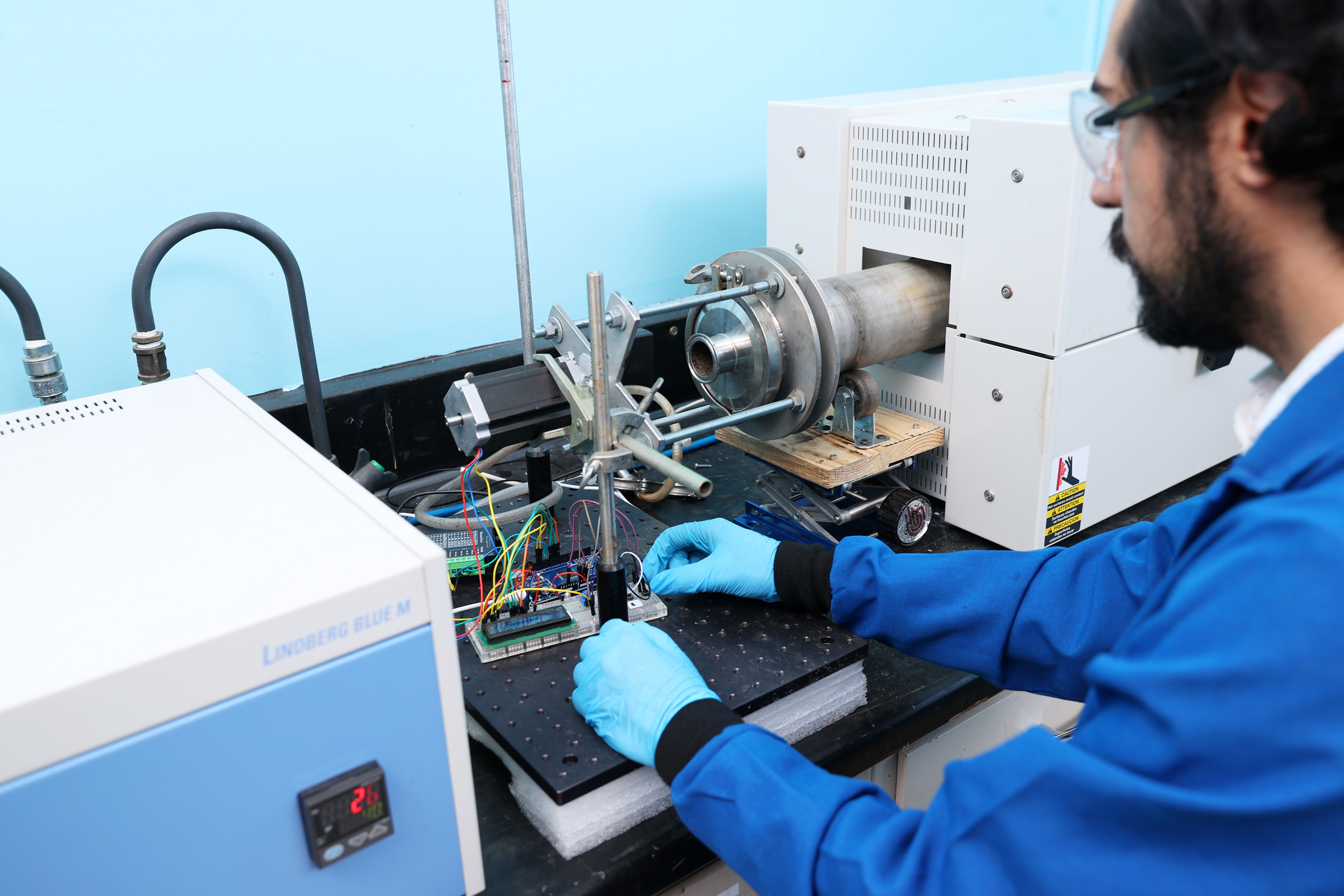Materials Characterization Core Facility
╠ř
 DalhousieÔÇÖs shared research facilities provide essential equipment, services, and expertise that drive research excellence across the university. These "core" facilities are central to DalhousieÔÇÖs mission and depend on sustained, centralized support. In 2020-21, a consultative review led by the Offices of the Vice President of Research and Innovation and Vice President of Finance and Administration identified ways to enhance support for these facilities, leading to the creation of the DalCore program. Funded by CanadaÔÇÖs Research Support Fund, DalCore promotes the development and sustainability of critical research resources by improving accessibility, streamlining administrative processes, and implementing coordinated, data-driven strategic planning.
DalhousieÔÇÖs shared research facilities provide essential equipment, services, and expertise that drive research excellence across the university. These "core" facilities are central to DalhousieÔÇÖs mission and depend on sustained, centralized support. In 2020-21, a consultative review led by the Offices of the Vice President of Research and Innovation and Vice President of Finance and Administration identified ways to enhance support for these facilities, leading to the creation of the DalCore program. Funded by CanadaÔÇÖs Research Support Fund, DalCore promotes the development and sustainability of critical research resources by improving accessibility, streamlining administrative processes, and implementing coordinated, data-driven strategic planning.
In the Summer of 2024, CTRI was approved to join this program and established the Materials Characterization Core Facility (MCCF) to support research excellence at Dalhousie. MCCF provides Dalhousie researchers with access to a range of instruments for diverse analytical applications organized by technique:
MICROSCOPY
Provides spatial information about materials.
ELECTRON
- Hitachi S-4700 FE Scanning Electron Microscope
Comments:╠řMagnifications up to approximately 500,000x, secondary and back-scattered electron image formation, X-ray spectra/mapping (EDS, for Z > 5), digital image acquisition, coating units (gold and carbon).
Contact:╠řDr. Eric Moreau,╠řMechanical Engineering
OPTICAL
- Optical Microscope
Comments:╠řup to 1000x, bright/dark field, polarized light, interference contrast, Nemarski contrast, oil immersion lenses, Polaroid, 35 mm and digital image acquisition (black and white).
Contact:╠řDr. Kevin Plucknett, Mechanical Engineering
- 3D Laser Scanning Microscope ÔÇô VK-X1000
Comments:╠řNon-contact profile, roughness and film thickness measurements, nanometer resolution, material and shape independentÔÇöfully automatic measurement and analysis.
Contact:╠řDr. Eric Moreau, Mechanical Engineering
OTHER
- Bruker Bioscope Catalyst Atomic Force Microscope with Horiba Raman Spectrometer
Comments:╠ř100 microns XY scanner; 22 microns Z-range.
Contact:╠řDr. Laurent Kreplak, Physics & Atmospheric Science
- Focused ion beam (FIB) microscope
Comments:
Contact:
SPECTROSCOPY/SPECTROMETRY (Also see Chemistry Mass Spectrometry Core Facility)
Measures╠řthe interaction of energy with matter.
- State-of-the-art 213 nm laser ablation system coupled to a Thermo iCAP Q quadrupole mass spectrometer
Comments: Microsampling capability using laser spot sizes of 25-150 microns; analytical sensitivity for a wider variety of elements into the ppb range; selection of matrix-matched sulfide and silicate standards, User-friendly data reduction using Iolite software.
Contact: Laser Ablation ICPÔÇĹMS Lab
RAMAN
- Nicolet NXR 9650 FT-Raman spectrometer
Comment:╠řNd: YVO4╠ř1064 nm laser; spectral range: 4000 cm-1╠řto 50 cm-1;╠řvariable temperature cell (-150 to 150 ┬░C);╠řdepolarization accessory.
Contact:╠řMike Johnson
X-RAY
- VG Microtech MultiLab ESCA 2000 X-ray Photoelectron Spectrometer (XPS)
Contact:╠řAndrew George, Physics and Atmospheric Science
- VersaProbe III PHI Scanning X-ray Photoelectron Spectrometer
Comments: Monochromatic, micro-focused, scanning X-ray source with cluster ion gun for depth profiling of soft materials.
Contact:╠řAndrew George, Physics and Atmospheric Science
DIFFRACTION/SCATTERING
Uses interference or elastic interaction of energy with matter.
- Siemens D500 Powder X-ray Diffractometer
Comments:╠řstructural analysis of powdered samples (4K to room temperature).
Contact:╠řAndy George, Physics & Atmospheric Science
THERMAL ANALYSIS
Uses heat energy to examine phase changes or decomposition in a sample.
- TA Instrument Q200╠řDifferential Scanning Calorimeter
Comments:╠řTemperature range of -170╦ÜC to 500╦ÜC
Contact:╠řMike Johnson
- Netzsch LFA 427 High-Temperature Laser Flash Thermal Diffusivity Apparatus
Contact:╠řDr.╠řStephen Corbin,╠řMechanical Engineering
- Netzsch 404 F1 Pegasus Differential Scanning Calorimeter
Comments: Pt furnace (RT to 1500┬░C), Turbomolecular vacuum pump + high purity inert gasses
Contact:╠řDr. Eric Moreau, Mechanical Engineering
- Netzsch STA 449 F1 Simultaneous Thermal Analyser (Differential Scanning Calorimetry + Thermogravimetric Analysis) with GCMS
Features: SiC furnace RT to 1550 C and Silver furnace -120 to 675 C. In-line Agilent technologies 7820A gas chromatography + 5975 mass spectrometer for evolved gas analysis.
Contact:╠řDr. Eric Moreau, Mechanical Engineering
 ╠ř
╠ř
